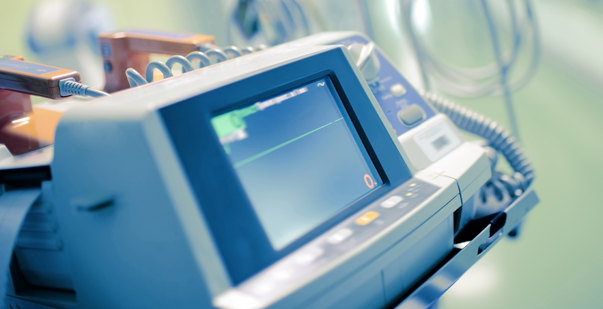Asystole is a state of standstill and causes when your heart’s electrical system fails, causing your heart to stop pumping. It is also known as ‘flat-lining’ because of the nature of the heart’s electrical activity.
It is a kind of cardiac arrest, and your heart stops beating entirely. This can make you pass out. It is also likely that you will find it difficult to breathe. Without medical care, this condition can be dangerous in only a few minutes. Learn more about asystole, its causes and treatment.
Master ACLS Now
Get ACLS certified with confidence
Why is asystole also known as flat-line?
So what is asystole meaning? Asystole is a clinical sign, as you cannot see or feel it without special equipment. The way to see asystole is by using an electrocardiogram. This diagnostic test involves sensors that are attached to the skin of your chest. This helps detect your heart’s electrical activity while showing it as a wave pattern on either a printout or a screen display.
As an electrical current travels through your heart with each heartbeat, the waves of the asystole EKG show the strength of that current and how it moves through your heart. It does not require any electrical activity to create a wave with asystole. Hence, it appears as a flat line.
What are the most common causes of asystole?
Asystole can take place because of any health condition or event. This causes cardiac arrest and disrupts your heart’s electrical system. Here are some of the causes of asystole:
- Blood loss
- Low oxygen levels
- Heart attack
- Electrolyte problems or dehydration
- Pulmonary embolism
- Irregular heart asystole rhythms, especially ventricular fibrillation and ventricular tachycardia
Read More: Treating Narrow Complex Tachycardia: A Clinical Guide
What are the heart-related causes?
The electrical system of the heart is vulnerable to interference and damage. Several types of heart problems lead to asystole and other forms of cardiac arrest:
Some of the common heart-related causes include the following:
- Heart attack: A heart attack is more than an electrical issue. This is because a heart attack is a result of a blockage in an artery. This supplies blood to the heart muscle. However, heart tissue damage caused by a heart attack involves the electrical pathways within the heart. Arrhythmia can result from a heart attack.
- Ventricular fibrillation: AFib is an arrhythmia where the ventricles quiver instead of contracting fully to pump blood out of the body. According to research, a prolonged episode of Fib is one of the leading causes of asystole.
- Ventricular tachycardia: Ventricular tachycardia occurs when the ventricles beat too fast and allow the heart to efficiently pump oxygenated blood through the body. It can become a serious concern, leading to a complete stop in the heart’s electrical activity.
- Atrial fibrillation (AFib): When the heart is in AFib, the atria quivers rather than relaxing and contracting in rhythm with the ventricles. According to a 2020 study, AFib may lead to a heart attack. Additionally, AFib can also cause other complications, such as ventricular tachycardia.
- Congenital heart disease: A few heart conditions are present at birth. Heart defects pose risks. Children born with a type of congenital heart disease live healthy lives. It is crucial to monitor their heart health frequently.
What are the treatments involved?
The primary way to manage asystole is by determining whether the cause is reversible. For example, if high potassium levels lead to asystole, it can be reversed, leading to a shockable rhythm. Asystole is part of cardiac arrest and is a medical emergency where every second counts. When cardiac arrest happens outside of a hospital, you must immediately start CPR. Effective and continuous CPR offers high survival chances.
Here are the asystole treatment options that are possible inside a hospital:
- Cardiopulmonary resuscitation: Medical professionals will start CPR immediately when a person goes into cardiac arrest.
- Epinephrine: This is also known as adrenaline and can help restart your heart.
- Treat the problem: If you address the problem that occurs due to electrolyte imbalance or hypothermia, then you must treat the problem.
Is asystole a ‘shockable’ rhythm?
Defibrillation is an emergency treatment involving an intense electrical shock to the chest. It is beneficial for converting an abnormal heart rhythm into a normal one. Defibrillation is used outside of a hospital setting with an automated external defibrillator. These devices help detect heart rhythms and deliver a shock whenever required.
Asystole is not a shockable rhythm, and defibrillation may make it harder to restart the heart. Defibrillation is hence the only option if the heart goes to a shockable rhythm. This is also possible when someone with asystole gets CPR.
Read More: Reversible causes of cardiac arrest 4 “Ts” and 4 “Hs”
Conclusion
Asystole is thus a dangerous problem that happens with cardiac arrest. The odds of survival are very low without prompt action. It is crucial to identify the causes and their treatments to provide the necessary care. The faster an individual with asystole gets medical care, the more likely they are to have a good outcome.







